Description
REDuced VIrtual Detector (REDVID) is a simulation framework and a synthetic data generator written in Python. As a reduced simulator, REDVID simulates the propagation of subatomic particles in a virtual detector model with a given geometry, inspired by the detectors installed at the Large Hadron Collider (LHC). The simulation model is complexity-reduced and is intended for generating source data to train Machine Learning (ML) algorithms and to perform ML-assisted solution exploration. The data is in the form of hit point coordinates in space and trajectory function parameters.
Sample events
A few events from simulations with varying recipes are shown for demonstration purposes. The plots below vary in track definitions. The track count is limited to five to improve legibility. From left to right, these plots depict the full event view, the hit points view and the tracks view, respectively. Note the incorporated detector model geometry as depicted in Figure 1.
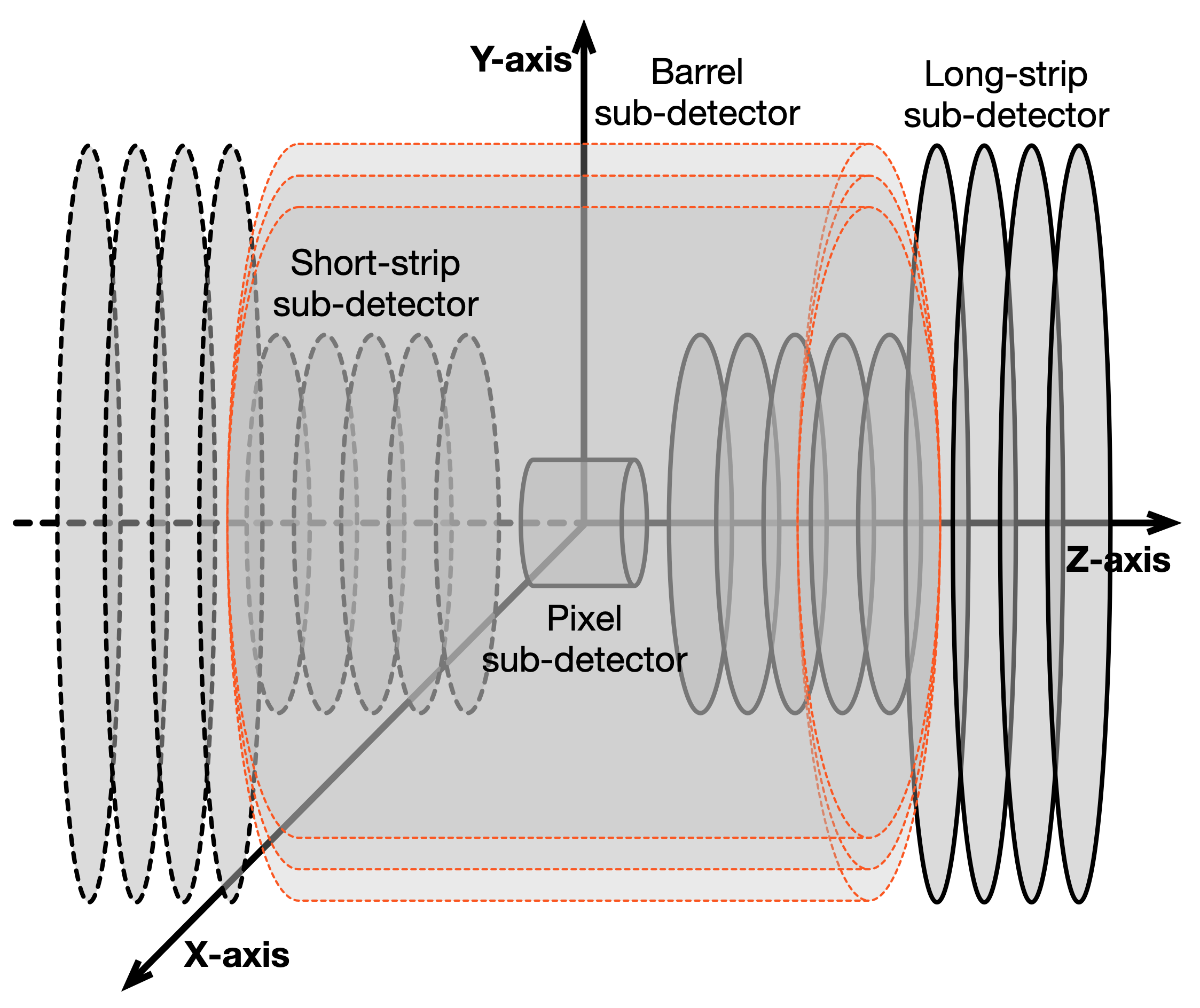
The following plots consider this virtual detector with a 90-degree rotated orientation for plots. Note that the Z-axis has to go through the detector. We keep the scale down in these examples for legibility purposes, i.e., we are generating a low number of tracks per event.
3D space, noisy hit coordinates, linear tracks
A sample event with five linear tracks starting at the geometric origin and being randomly directed. The randomisation of these tracks follows the first track randomisation protocol, i.e., Protocol 1 - Last layer hit guarantee. Refer to our relevant publications for further details on track randomisation protocols. Different views for this event are depicted in Figure 2.
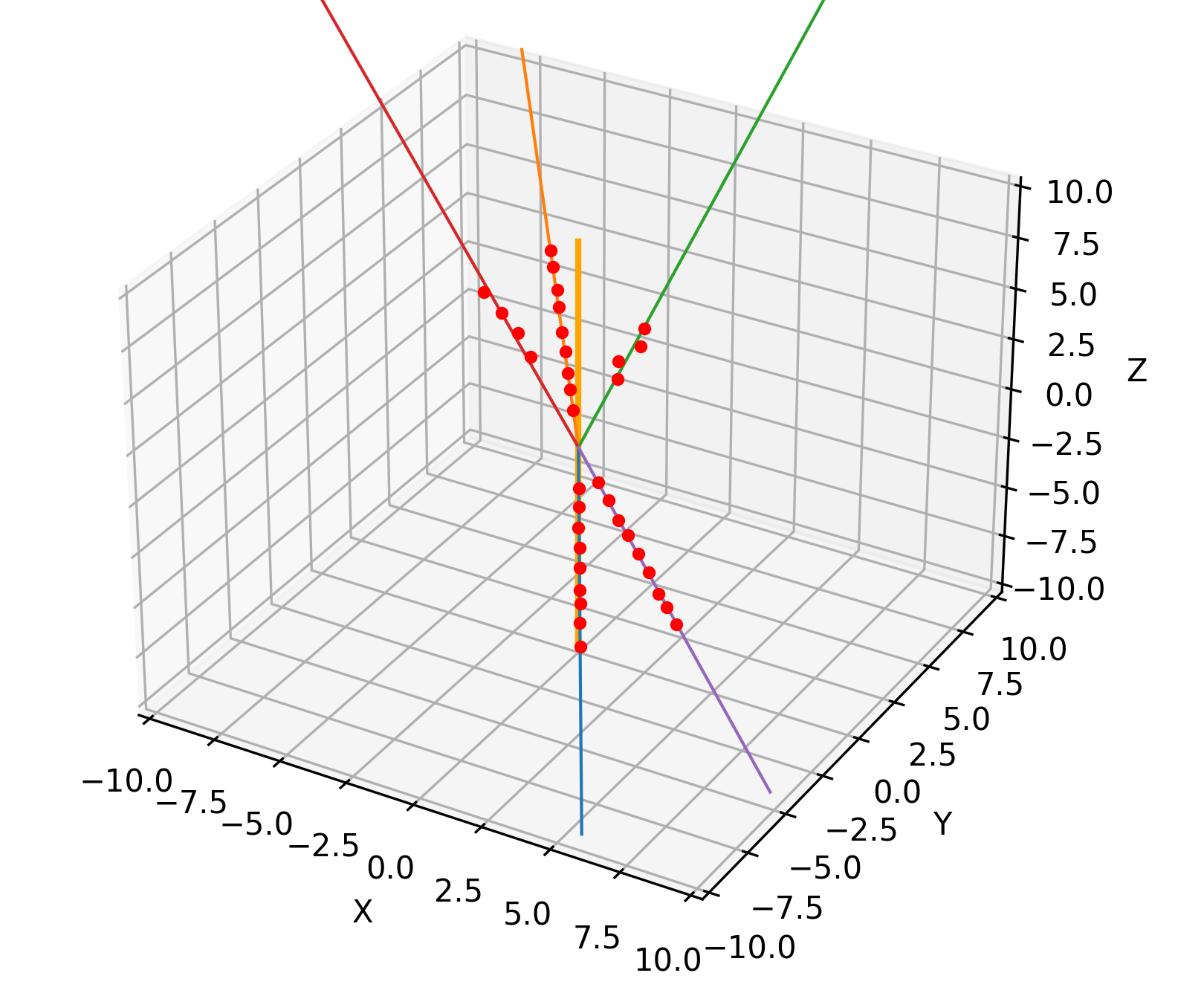
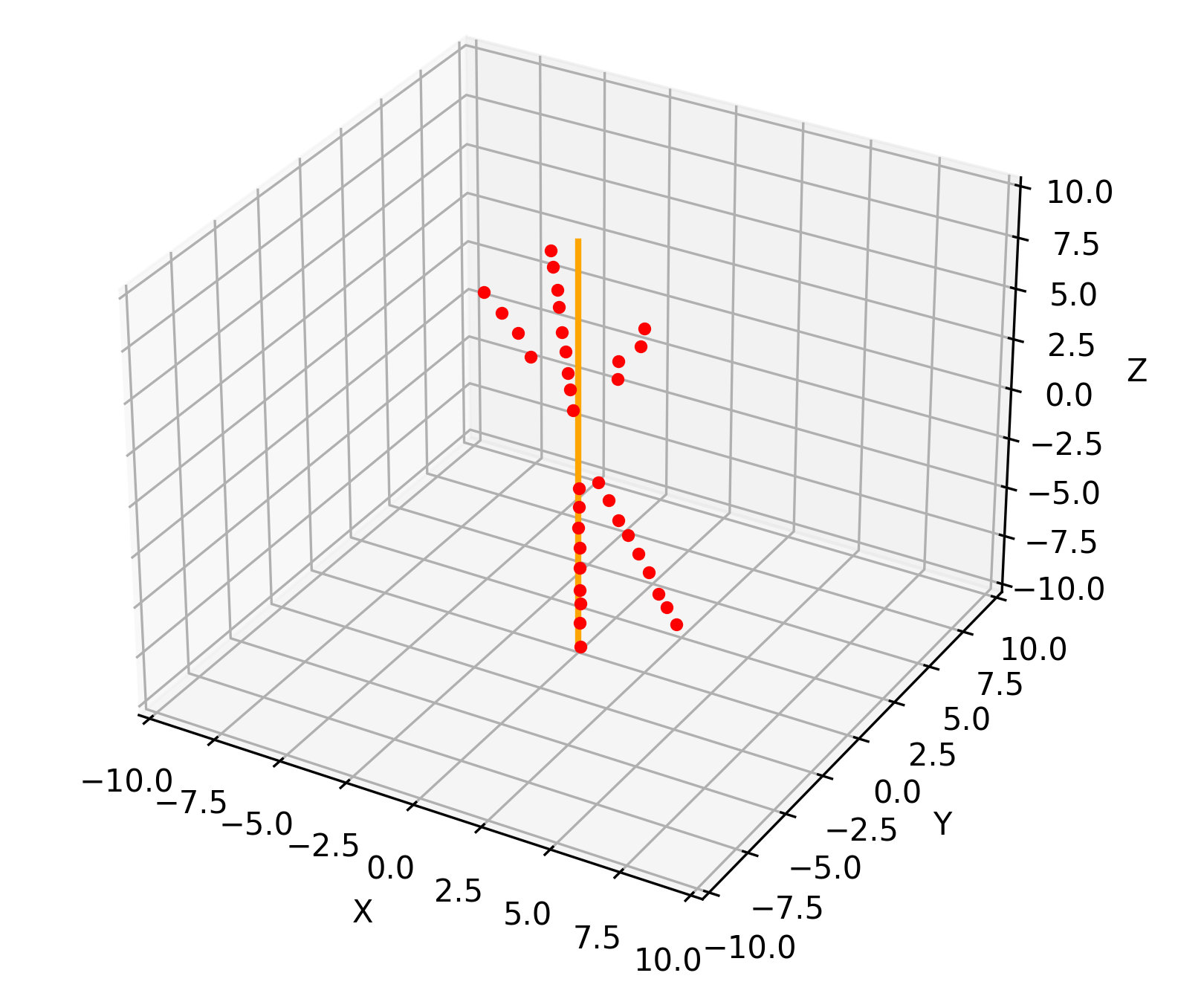
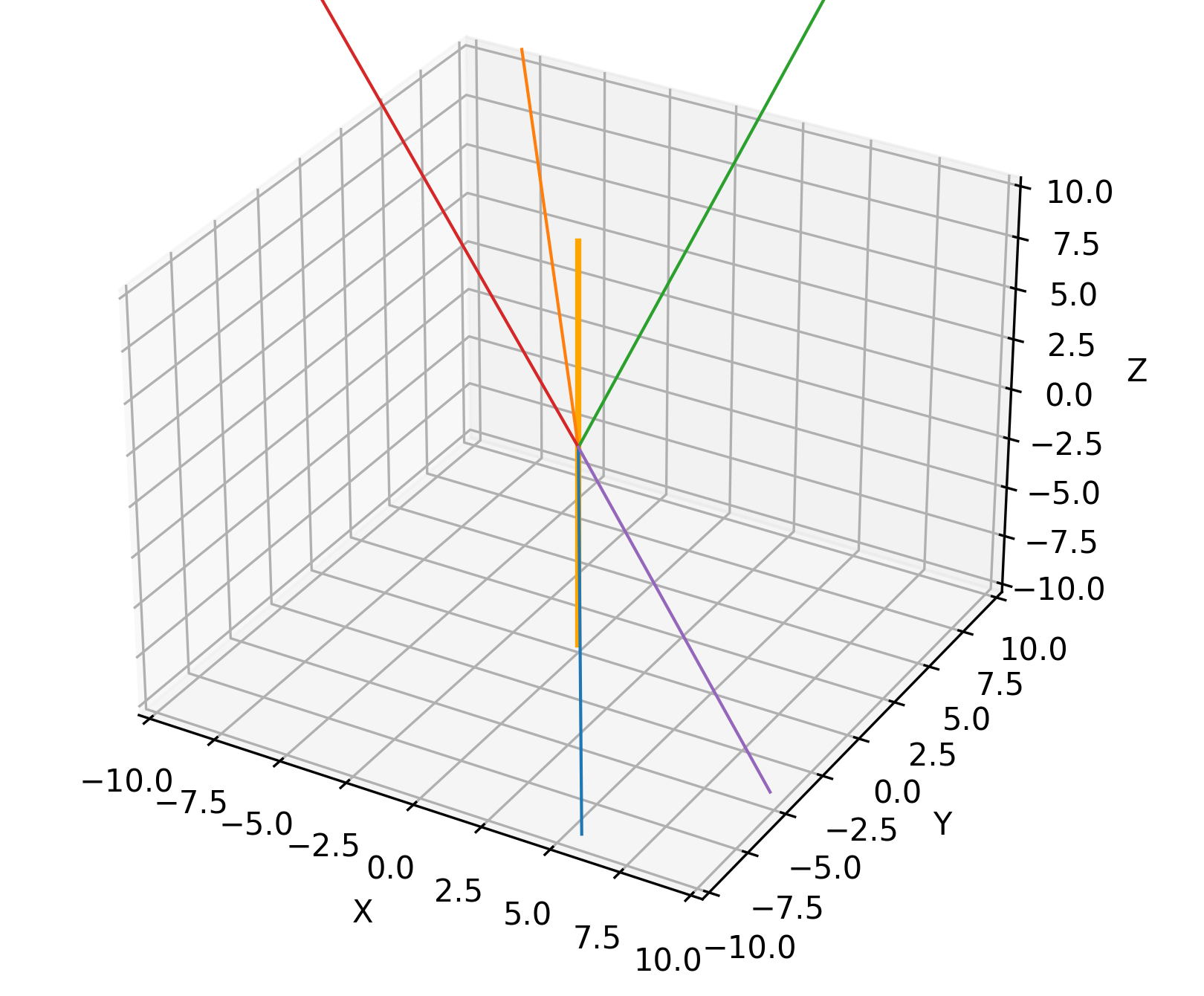
3D space, noisy hit coordinates, helical uniform tracks
This example event goes a step further in complexity compared to events with linear tracks. Helical uniform tracks do not occur in realistic settings. However, the generated datasets are of independent value for research. Figure 3 depicts such an event with five helical uniform tracks.
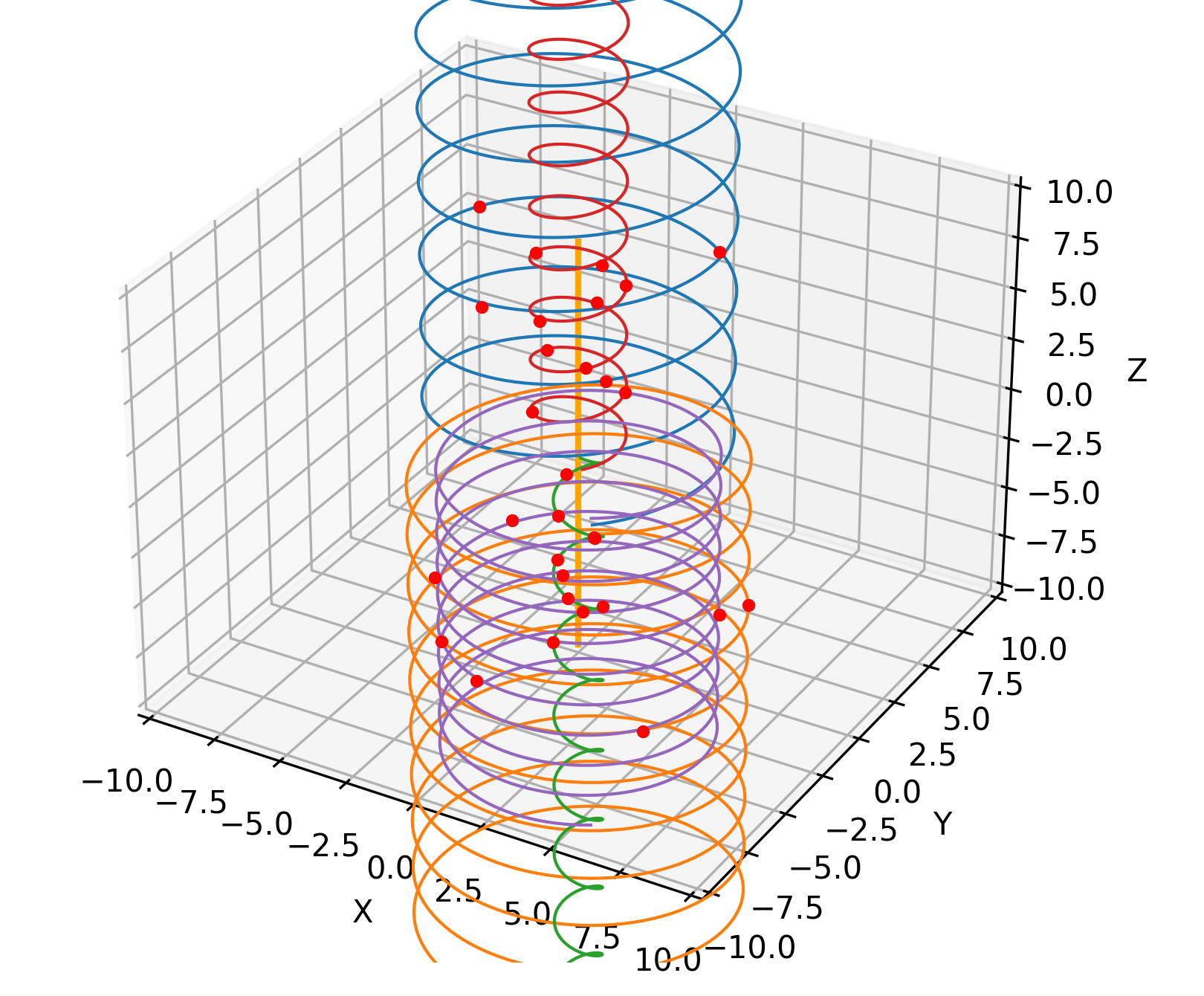
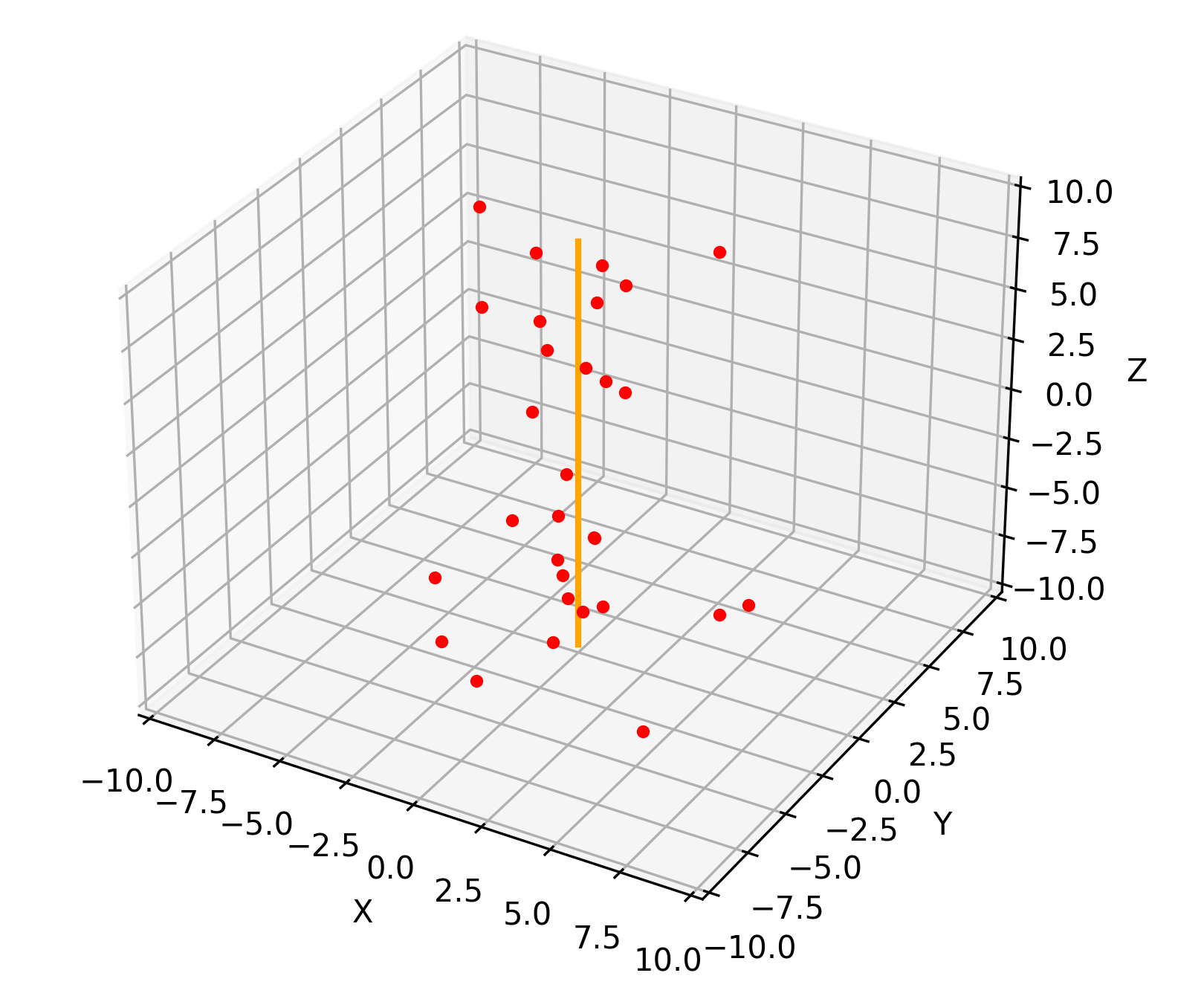
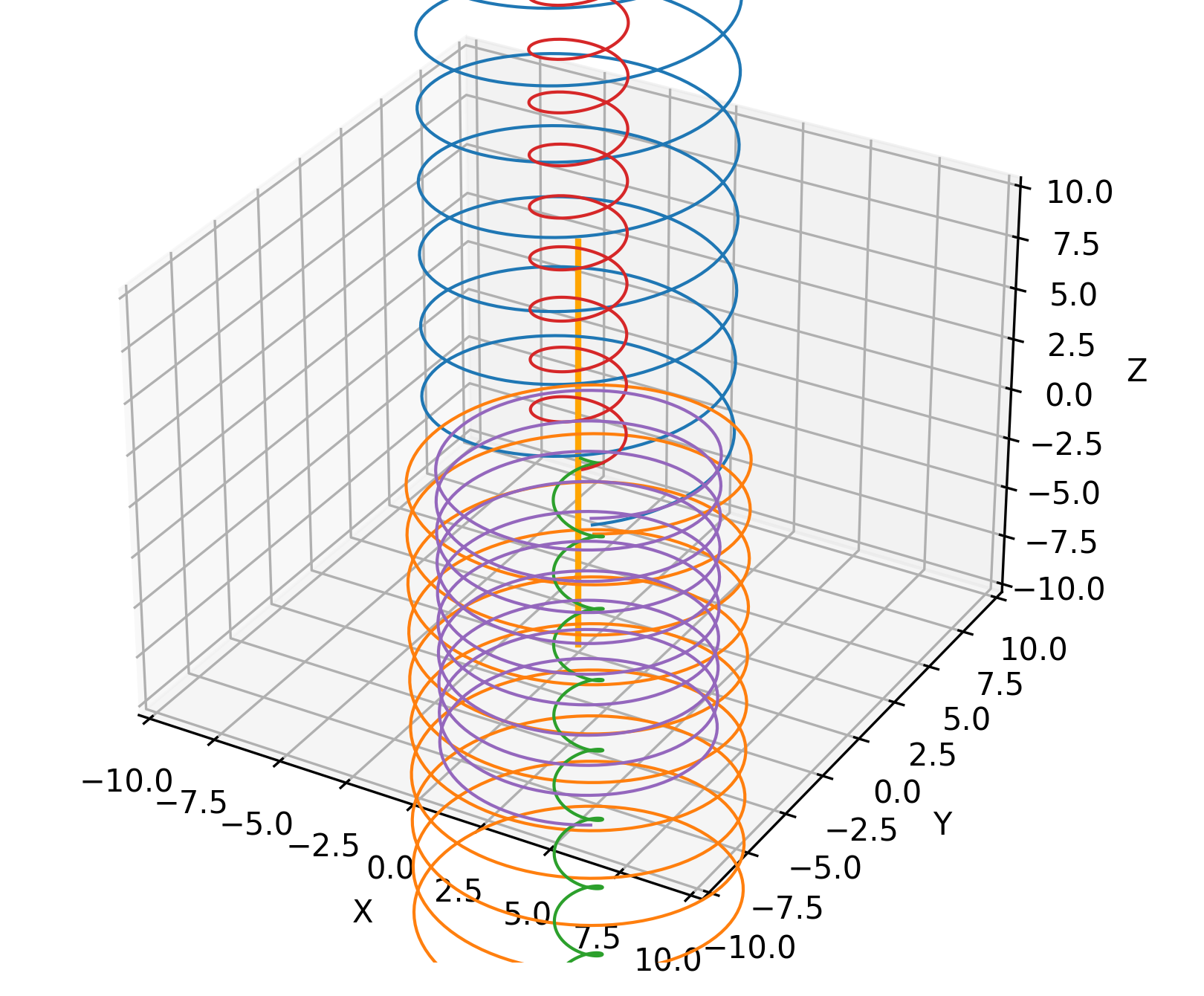
3D space, noisy hit coordinates, helical expanding tracks
Helical expanding tracks are the closest type REDVID can generate to real-world tracks. Other complexity increasing features do not directly influence a track's formation principles. For instance, all these examples have hit point coordinate smearing enabled. Figure 4 showcases an event with five helical expanding tracks, following the same track randomisation protocol as earlier.
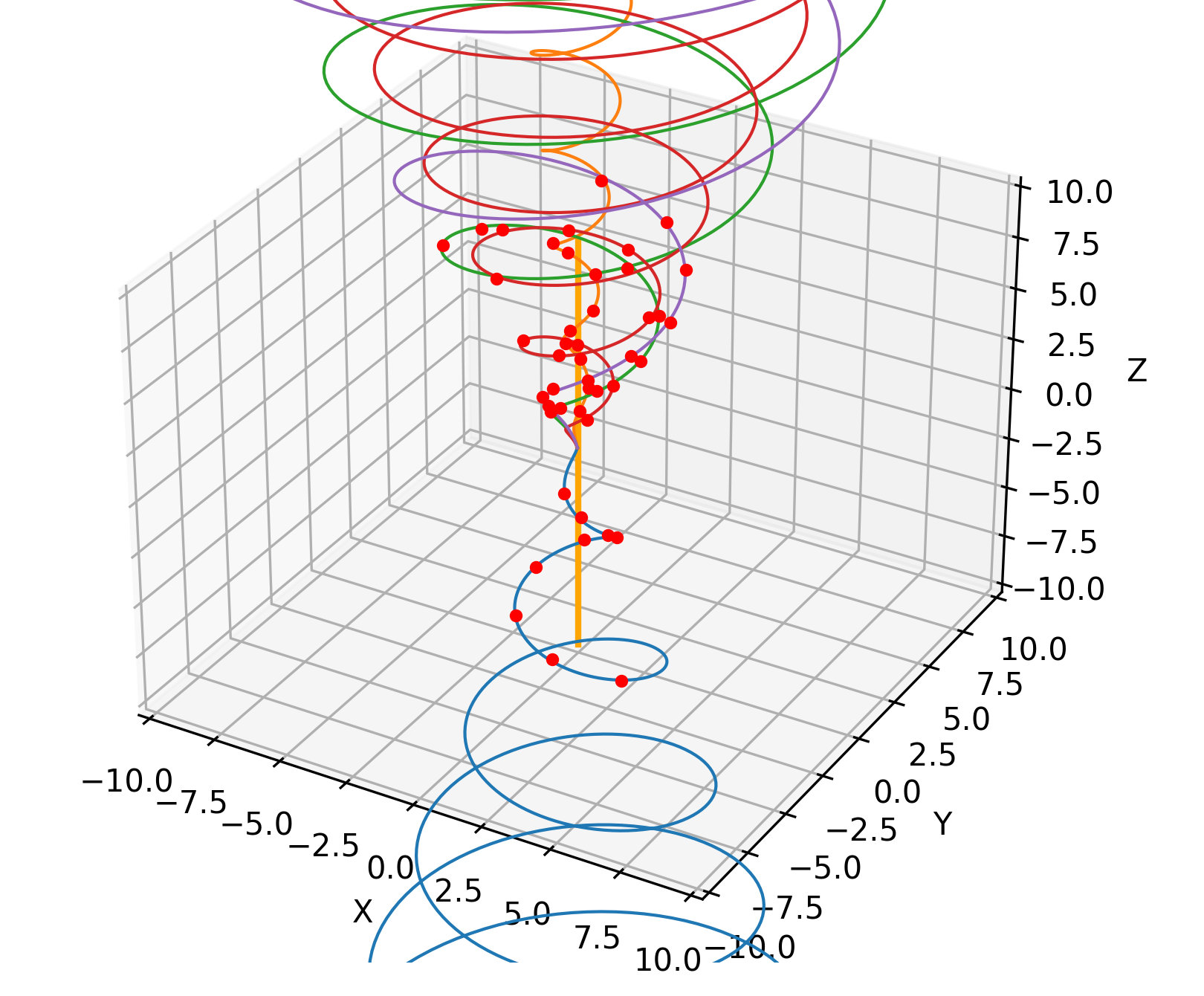
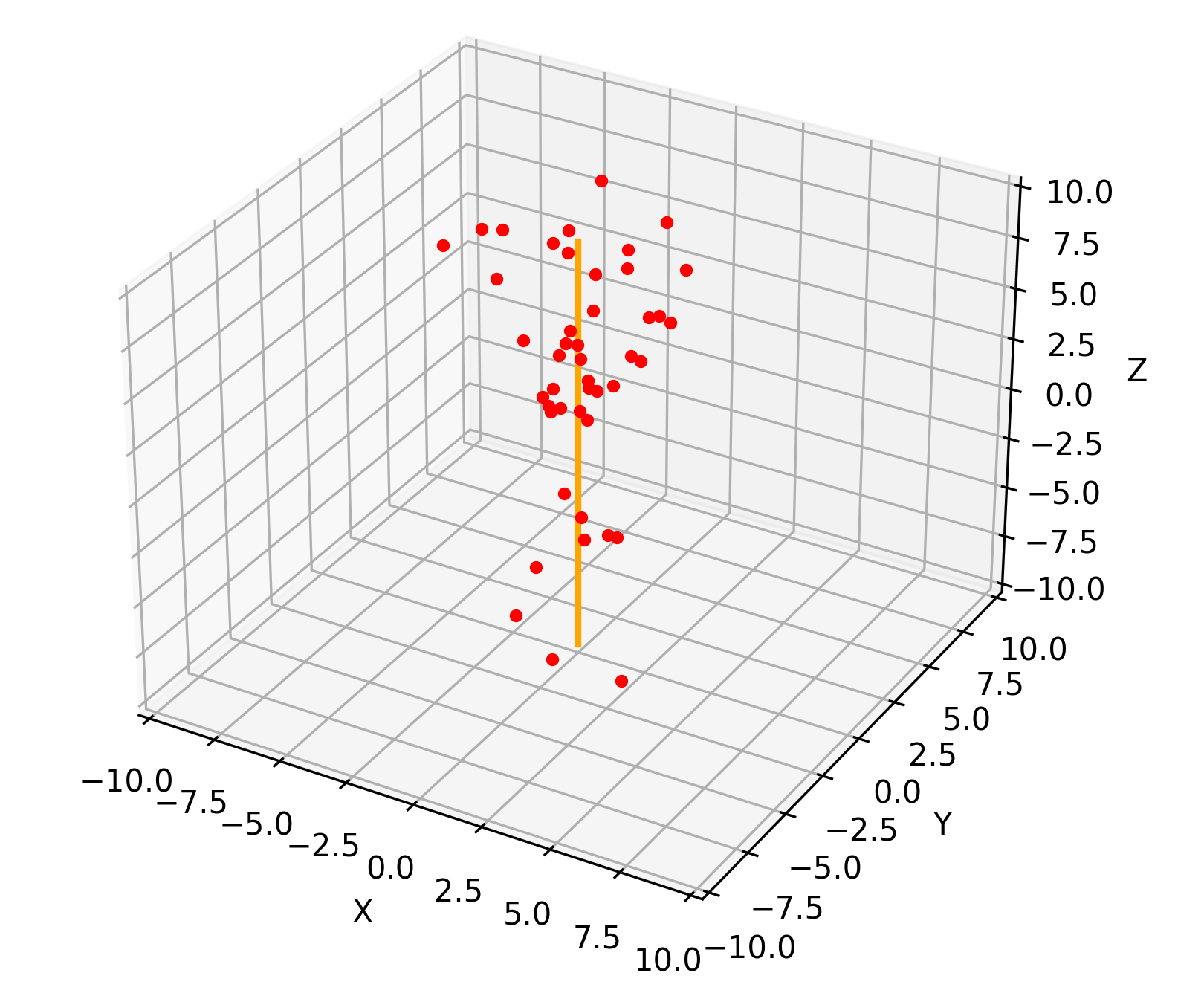
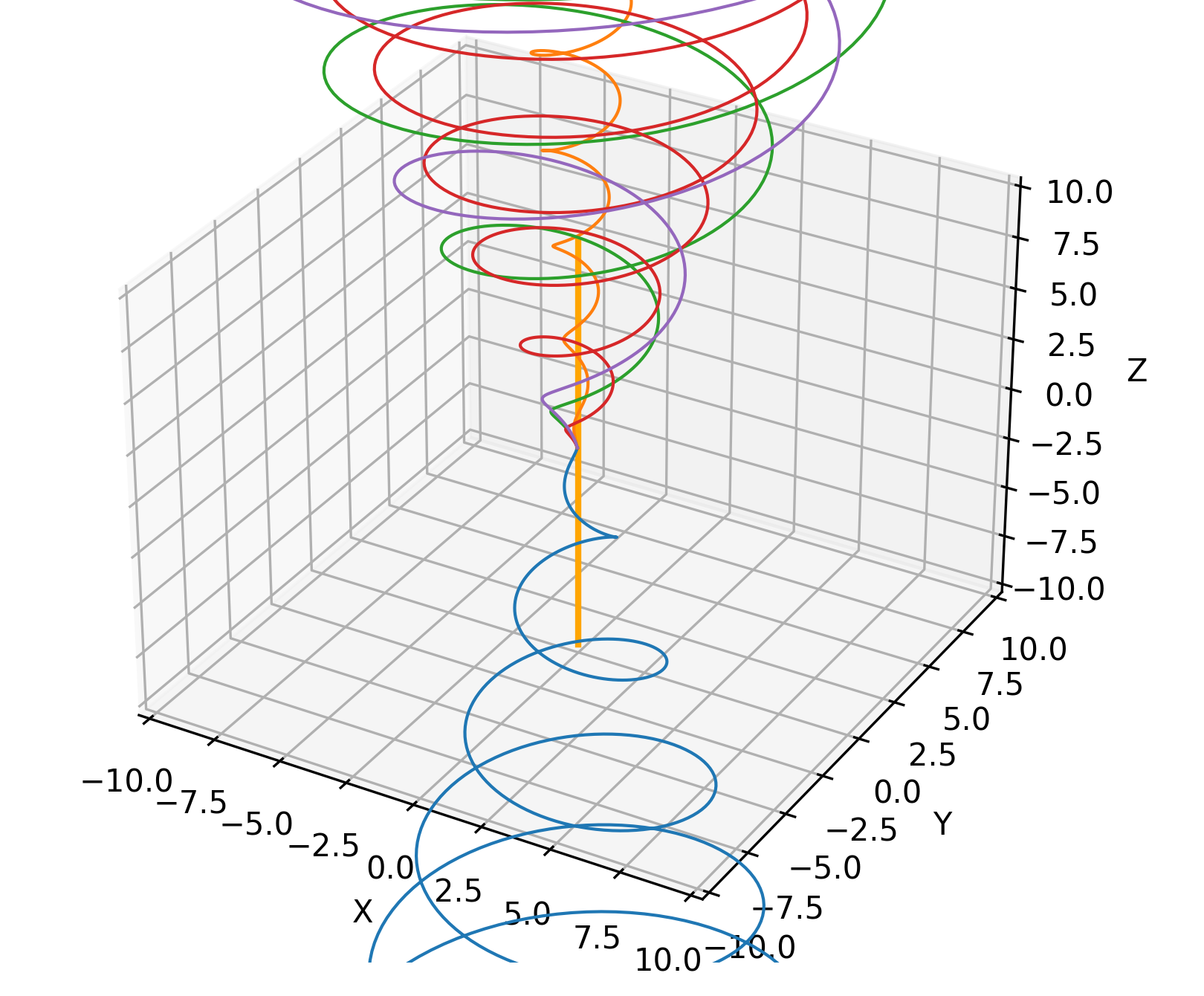
Feature set
REDVID is highly configurable and many features available in the main configuration file can be tweaked according to user requirements. We provide the available and planned features in Table 1, without exhaustive descriptions. Current availability is indicated using status markers.
Orange: Limited selection
Red: Under development
| Category | Feature | Status |
|---|---|---|
| Execution config |
Anchor path Multiple output modes Automated execution parallelism Automated large job division Automated batch processing Automated batch processing parallelism Performance monitoring Visualisations Import/load spawned detectors Dataset coordinate system |
|
| Experiment config |
Custom/auto experiment ID Event count Fixed track count Variable track count with range Track direction, designated/random Shift over the Z-axis |
|
| Experiment config (2D tracks) |
Slope limits y-intercept limits |
|
| Experiment config (3D tracks) |
Track randomisation protocols Sub-detector track aggregation Track type: Linear Track type: Helical uniform Track type: Helical expanding Track type: Multiple types Track level: Primary tracks Track level: Secondary tracks Early terminating tracks Jet track type: Linear Jet track level: Primary jets Jet track level: Secondary jets |
|
| Experiment config (Hits) |
Hit point calculation methods Hit point smearing Hit point recording probability Holes (unrecorded hits) |
|
| Geometry features |
Custom/auto detector ID Dimension Detector space Cartesian axis boundaries Detector space Spherical boundaries |
|
| Geometry config (2D) |
Origin coordinates: (x, y) Sub-det. presence: Pixel, SS, LS Sub-det. layer count, per type Sub-det. centre coordinates Sub-det. layer distance Sub-det. outer radius Sub-det. outer-inner radii delta |
|
| Geometry config (3D) |
Origin smearing Origin smearing type Origin coordinates: (r, θ, z) Sub-det. presence: Pixel, SS, LS, Barrel Sub-det. layer count, per type Sub-det. centre coordinates Sub-det. layer distance Sub-det. outer radius Sub-det. outer-inner radii delta Sub-det. end z Sub-det. end-start z delta |
|
Code repository
The code is open-source and publicly available. Refer to the included configuration file for a complete list of available parameters and their effect. To understand the overall functionality and usage of the tool, refer to the provided README, RELEASE NOTES, and documentation, as well as the related publication [1].
Datasets
Collections of example, representative datasets are generated using the REDVID simulation framework which contain complexity-reduced subatomic particle collision event data for linear [2] and helical [3] tracks. Particle trajectory information and hit coordinates from interactions with reduced-order virtual detector models are included. The data are generated in 3D domain and follows the cylindrical coordinate system for hit point coordinates in space and trajectory function parameters.
The included five tarballs each belong to a different data generation recipe. While all recipes include 10000 collision events, the number of tracks included in events varies from 1 track per event to 10000 tracks per event. This is noticeable from the tarball names.
The dataset is intended to be used as synthesised input for research involving ML-assisted pipeline design exploration, as well as ML model design exploration, e.g., Neural Architecture Search (NAS). To understand the data and its generation in detail, refer to the provided README, as well as the related publication [1]. Further details regarding the ML research incorporating these datasets are available in our Connecting The Dots 2023 (CTD 2023) proceedings paper [5].











